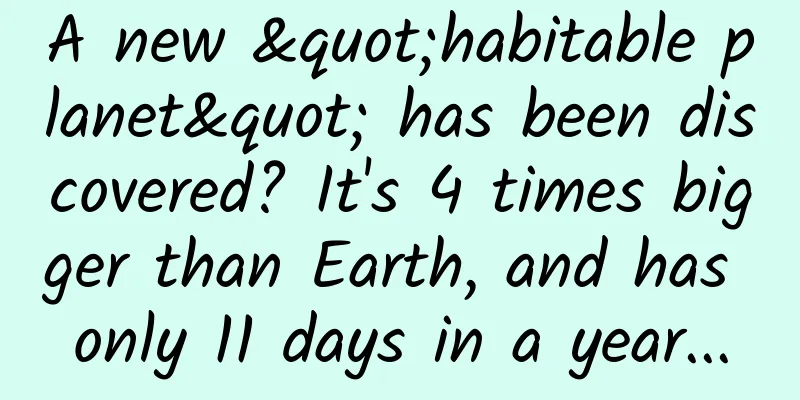Two simple steps to ensure you pick a good watermelon with thin, crispy and sweet skin! Everyone can learn

|
How can you not eat melon in summer? But for most people, picking melons is like opening a blind box. The difference is that if you open a blind box you don’t like, you can sell it on Xianyu; if you pick a bad melon, you can only think you are unlucky... There are various tutorials on how to choose melons online: listening to the sound of the melon, looking at the vine, looking at the pattern, looking at the navel and the stem. But these methods are so diverse that I was "studying like a tiger, but when it comes to practicing, I'm stuck in the same place" and I don't know how to choose. This time, we bought 15 watermelons specifically to try out whether these online watermelon selection tips are accurate. 1. Is it metaphysics to pat a melon before buying it? There is actually a certain scientific basis for choosing melons by listening to their sound. The composition and texture of watermelons of different ripeness are roughly as follows: The internal structure of watermelons of different maturity levels is different, which causes the sound waves they produce when they are tapped to change. This is similar to the difference in sound between patting the belly of a thin person and the belly of a fat person. So, theoretically speaking, it is feasible to identify melons by their sound. Someone specifically recorded the sound of slapping melons and studied the relationship between the peak frequency of the sound and its maturity, and found that there actually is a correlation! Scientists even gave it a high-sounding name, called the non-destructive quality inspection method of agricultural products based on acoustic properties. 2. How to choose melons by listening to the sound? Although there is a scientific basis for choosing melons by listening to the sound, for most people, this action is just a fake action. I faked it so that my boss would think I was very professional. In fact, I just took pictures of a dozen watermelons and randomly selected the best-looking one. This time, we bought 15 watermelons to help you find out the secrets. Because it is difficult to buy raw watermelons in fruit stores, we asked the store owner to go to the watermelon field and personally pick a few raw watermelons: Finally, 15 varieties of watermelons with different maturity levels were collected: In order to record the purest sound, we came to the acoustic laboratory of Zhejiang Institute of Metrology. This is the most advanced anechoic room in Zhejiang Province, costing tens of millions of yuan. Walking inside, you can almost hear your own heartbeat. The experimental process is very simple: tap the melon - record the video - analyze the data using software - open the melon - measure the sugar content in the center - sensory evaluation by the people who eat the melon. The sensory evaluation is just what everyone thinks it is, with real people tasting the watermelons and then using this standard to grade the maturity of the watermelons. When tapping a melon, we always choose the center part, as this part has the most pulp and the vibration feedback after tapping will be more sufficient. Tap each watermelon three times with the same force, and repeat until the software collects enough sounds. After the recording is complete, the software will automatically convert all the frequencies of each watermelon tapping sound. 01 Which sound indicates a good watermelon? Let’s take the same variety of local watermelon as an example to see the relationship between maturity and sugar content. As can be seen from the figure, there is indeed a certain correlation between the maturity and sugar content of watermelon: The riper the watermelon, the higher the sugar content, which means it becomes sweeter. However, a watermelon with too high a sugar content will be overripe and taste bad. For the general public, taste is the most important thing, so we will use maturity as the judging criterion. The relationship between the maturity of 9 local watermelons and the average peak frequency of the watermelon-slapping sound is as follows: In addition to the fact that there was one piece of data about a raw watermelon that was quite strange, it was probably because our researcher's hands were shaking accidentally when he was taking the picture of the watermelon. The average peak frequencies of the remaining eight watermelons are similar to those in the literature we mentioned above: Raw: 139~180Hz Just ripe melon: 143~152Hz Overripe melon: 114~139Hz As the watermelon matures, the sound of tapping becomes duller. Those with a slightly crisp sound are mostly unripe watermelons, while those with a slightly dull sound (low frequency) are basically ripe watermelons. We tried to study the relationship between the average peak frequency and maturity of different varieties of watermelons (the 15 watermelons we bought at the beginning). The results showed that there was a lot of overlap between the different maturity levels, which may be caused by the differences in size, weight, and skin thickness of different varieties of watermelons. So be careful! This method is only applicable to horizontal comparison of the same variety. If you put Black Beauty, Kirin Melon, and 8424 together, even a farmer who has been growing melons for 20 years may not be able to tell the difference between the raw and ripe ones! 02 Is it more accurate to flick the melon or to slap it? Considering that everyone has different habits of slapping the melon, some are used to flicking the melon, some are used to slapping the melon, and some are used to slapping the melon...... So we recorded two kinds of audio, one for patting the melon and the other for flicking the melon, to see which method is more accurate. The results of the two methods are as follows: When watermelons of different ripeness are tapped, the [average peak frequency] of the sound overlaps slightly. It's like you took a raw melon, a ripe melon, and an overripe melon, and after tapping them, they all sounded about the same, so you opened them with confidence, thinking they were all good melons. When I opened it, I saw: Oh wow, two of them failed. As for the melon group, the boundaries between the [average peak frequencies] of different ripeness are clearer, so the differences between watermelons of different ripeness can be more easily heard. Judging from this experiment, the sounds made by tapping melons vary more greatly, which is more friendly to novice melon pickers. When you usually choose melons, do you think tapping or flicking is more accurate? Please leave a message in the comment section to tell us. 3. Are the online methods of looking at the melon pattern, vines, and navel accurate? In addition to the traditional art of tapping melons, there are now more and more ways to look at melons. We took these methods and consulted Associate Professor Gu Yourong, a botanical expert at Capital Normal University. It seems that among the methods of choosing melons spread on the Internet, only the one about looking at the melon vine is somewhat accurate. The rest... are probably just some kind of metaphysics. We speculate that these methods can be so popular because listening to melons requires a high level of hearing and experience, so someone invented this relatively (but) (not) simple (accurate) method. Finally, let me summarize the reliable method of picking melons: ① Look at the vines Watermelons whose vines have dried up may not be fresh, so it is best not to buy them. ②Listen to the sound of melons After looking at the melon vines, select a few melons of interest and tap them one by one. Choose a melon that makes a relatively dull sound. If you want to be more accurate, you can use the "tap melon" method. If you find our method of selecting melons helpful, you are welcome to forward it to the Loving Family group. This summer, let’s have fun eating melons together! References: [1] Wei Yanjun, Rao Xiuqin, Qi Bing, Lin Pengniao, Li Jiangbo. Determination of maturity of watermelon based on its acoustic characteristics [J]. Agricultural Products Processing (Journal), 2012(01):8-10. [2] Xiao Ke, Gao Guandong, Teng Guifa, Zhang Yuxin, Jia Yuchen. Audio nondestructive detection technology for watermelon maturity[J]. Agricultural Mechanization Research, 2009, 31(08):150-152+155. [3]Kouno, Y., Mizuno, T., Maeda, H. & Akinaga, T. Internal quality analysis of watermelons by an acoustic technique and its application in Japan. ACIAR PROCEEDINGS (1993) P392. [4]Kouno Y, Mizuno T, Maeda H, et al. Internal quality analysis of watermelons by an acoustic technique and its application in Japan.[Poster paper][J]. ACIAR Proceedings-Australian Center for International Agricultural Research (Australia), 1994. |
>>: Learn about the Anti-Japanese War in one go!
Recommend
How will China's robotics industry take the lead in the battle for discourse power under the market size of 600 billion yuan?
Artificial intelligence and the robotics industry ...
How much does it cost to customize the Meishan perfume mini program? What is the price for customizing the Meishan perfume mini program?
Meishan perfume applet customized price 1. Displa...
How to use Weibo marketing and promotion in 2022!
Brushing teeth and checking Weibo are the first t...
Three common misunderstandings about hair care, must read before you have hair loss!
Mixed Knowledge Specially designed to cure confus...
The “foreigner restriction order” strikes again. Who touched my “Oppa”?
According to news today, the "foreign restri...
Can the Star Era ET, which starts at 189,800 yuan, stand out from the shadow of the Star Era ES and become more independent?
Do you still remember the Zhijie S7 jointly devel...
Brush your teeth after meals, trim your nails frequently... these seemingly "hygienic" good habits, but you may have been doing them wrong!
We have been instilled with the awareness of &quo...
Musk sells Tesla car insurance, which is 20% cheaper than traditional insurance and is first launched in the United States
Recently, foreign media reported that Tesla CEO E...
3 tips for a successful marketing campaign!
What are the elements of a successful marketing c...
Smartphones may soon be able to monitor your breathing during sleep
Researchers say they have come up with an accurat...
How to choose selling points for advertising? Analysis of promotional materials for the financial industry
Let’s test you today. Taking the financial indust...
Promotion and Marketing: What to do if traffic is high but conversion rate is low?
What if you have lots of visitors but not a lot o...
The information flow copy targeting is the same, why is the CTR different by 183%?
Today, we want to discuss a problem that seriousl...
iOS 14.7.1 is released urgently, all users are recommended to update
[[413443]] Repair Watch Unlock On the day when th...
How much does it cost to be an agent for Qian'an's online recharge mini program?
How much does it cost to be an agent for an onlin...









